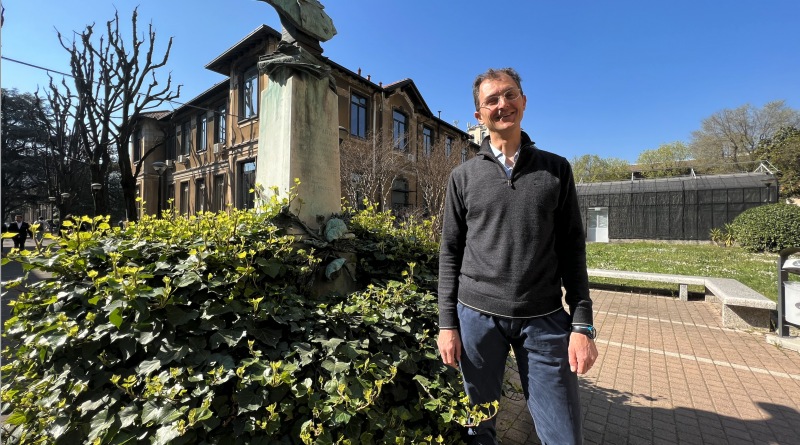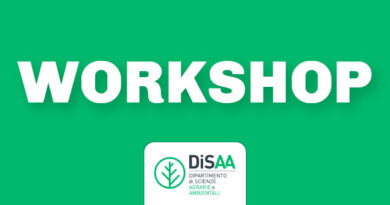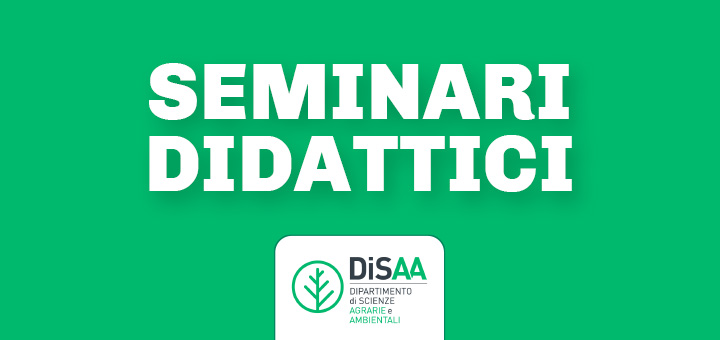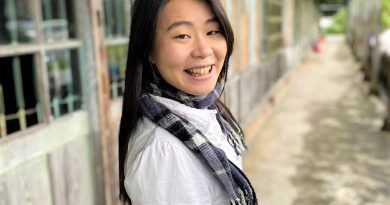#MeetTheProfessors
Interview with Luca Bechini, President of the Masters Course in Sustainable Natural Resource Management
Before this interview I read your CV and I have to say that it is surprising. Talking about the resilience of agro-ecosystems as early as in 1995 – now resilience is a word frequently used but 30 years ago… At the university, I gained a great passion for farming systems, and since I was young I always liked very much to study and learn new things. In particular I like being involved in research to get an overview of phenomena.
What does it mean?
The best scholar is the person who is able to create a “summary framework” and to consider several aspects of the same subject, at the same time. Take for example the studies we are conducting on sustainability. We have to consider not only the environmental impact of a production, but there are also many other points of view to explore: the effect of cultivation practices on yields, product quality, economic balance, nutrient balance, environmental fate of plant protection products, soil fertility, etc. In short, before classifying a production as sustainable, we need to make the calculations right!
For example, farmers should take into consideration the economic aspect of a production.
Exactly. The profile of the farmer has changed considerably in the last century. Think of our grandparents and the cultivation techniques that were used back then. Now, the role of technology is much more important. A student could imagine farming as a production system based on very simple equipment that has been used for long time. But at DiSAA we do work and use drones, satellites, biotechnology and artificial intelligence!
Tell me more about it.
With a growing world population, we can work and adjust people’s diet, making them more efficient, for example by increasing the consumption of plant-based food. This scenario is often proposed by some people as the solution to reduce arable land and agricultural production. The other scenario is to produce more per unit of area in a smarter and more efficient way.
Commonly called smart agricolture
Absolutely! We can talk about precision farming. That is why advanced technology plays a key role in our studies. For example, we are talking about precision fertilisation, which brings the right amount of nutrients at the right time, to the right place.
How do you make this calculation?
Take as an example nitrogen, which is an essential nutrient for crops, as it helps to support plant growth. With our studies, we obtain maps on the quality of the soil and define the state of the vegetation in real time to decide the most appropriate dose of nutrients to be provided, including by checking the outputs obtained in previous years, in each and every area of the field. And to do this, we use technologies of all kinds! Drones, for example, allow us to have aerial images in real time, which are crucial for understanding how the crop has grown, while geophysical survey tools allow us to distinguish areas of field characterized by different types of land.
This is a multidisciplinary study…
At the end of this procedure, all this information is put together to precisely determine where to fertilize and how. In a similar way, irrigation can be managed. The aim is therefore to manage scarce resources, such as water and nitrogen, in an efficient way. This also maximizes the production and minimizes the impact on the environment.
It is complicated but crucial…
Yes, every day more. The sources of information to be considered are numerous and should be integrated from an agronomic point of view, i.e. we need to consider the cultivation system as a whole, to know the history of the plot, to consider its irrigation system, but also any diseases that may affect the plants…
How do you structure your collaborations with companies?
In many of our research projects, companies participate as partners, thus collaborating in experimental design, research and dissemination of results. Our students are therefore also involved in this area: in several cases, they carry out part of their traineeship in commercial farms or in educational farms linked to the University of Milan, working side by side with our research staff. The activities they carry out may consist of sampling and measuring, field or laboratory surveys, depending on the type of project, interest and preparation of the student.
I believe that this type of mentoring is interesting as it gives students the possibility to see all stages of a research project.
Yes, from field work to laboratory, until the final processing of research data. The students understand the origin of data. They complete their studies, being able to explain each individual number of a graph, its origin and all the aspects characterizing its production, as well as the entire interpretative part of analysis and use.
Can you give me a concrete example of a project?
An example of an ongoing project is X-COVER (https://www.covercrop.it).
Yes, I have seen the site. What is it?
Cover crops are special crops that are not grown to produce food, fibre or fuel, i.e. for traditional agricultural uses, but only for the benefit they can bring to the soil and the environment.
So, they are harvest crops?
Well, they reach the end of their growing season and then they are destroyed by man or frost. During their life cycle, their function is to maintain and improve the fertility of the soil, to protect flaws from nitrate leaching, to improve nutrient availability and limit weed growth. Lombardy Region has funded the project and DiSAA is working on its implementation with an association of agricultural producers interested in this type of farming practice.
Do you also work on European projects?
Yes, DiSAA professors often work on EU-backed projects in the field of research and innovation. The reference framework programme is Horizon Europe. Another important source of funding is through the EU rural development policies. In general, we have established a rather lively dialogue with other European universities, the farming community on the ground and the regions. We are a ‘Research University’. Here, students find professors at the forefront of teaching but also producing new knowledge and investigating new methods of growing and investigating agro-ecosystems. This makes our Department a fertile and stimulating environment.
Can we say that in some cases DiSAA professors work as advisors?
Yes, if it is necessary to provide a technical opinion. The results of our research projects can be used by European and national institutions to shape their policies. Ultimately, applied research programmes are designed with the aim of bridging knowledge needs or better defining issues of practical relevance to a specific topic.
For example?
Well, the same X-COVER project. It helps to provide knowledge of the application of a practice promoted under the EU Rural Development Plan, in terms of conservation agriculture, in which cover crops play an important role. With this project, we have sought to give practical answers in support to the European choice that has decided to promote these crops. The strength of these studies is that they are, as we say today, multiactor. There is not only one research body involved, but there is also an association of agricultural producers and four holdings, in a partnership.
All different actors have their say in the process.
Yes, the idea is precisely that. They share their views and needs, and this ensures that results are more useable because they are defined on the basis of prior consultation and dialogue.
You are the President of the newborn Masters Course in Sustainable Natural Resource Management. Why do you believe this is a cutting-edge course?
Look, the extraction and processing of natural resources drives all aspects of the triple planetary crisis of climate change, biodiversity loss, and pollution with health implications included. I think that the growing interest of media and politics about environmental issues means that it is now crystal clear not only to us, the scientists, but also to the main public how this crisis will be severe, how the countdown has already started. I think our laureates will be very much required by the job market across different disciplinary areas.




